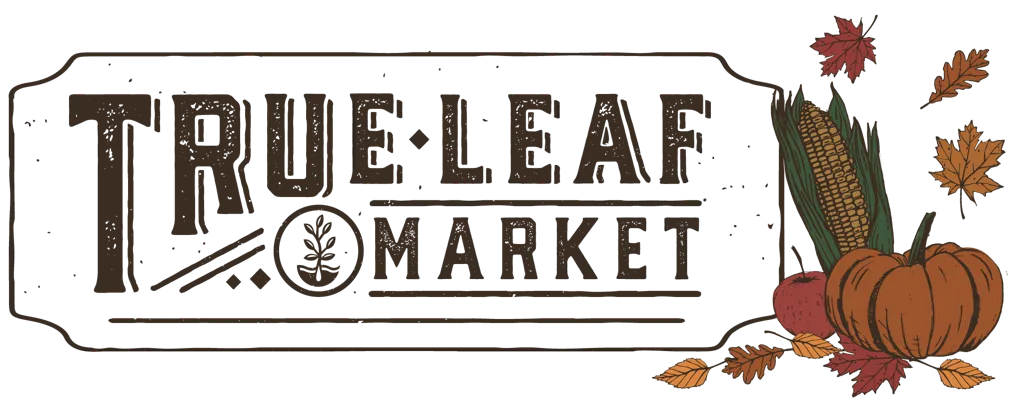Download Free Vegetable Growing Guide PDF
Growing Hale's Best Jumbo Cantaloupe Melon in the Vegetable Garden
To plant Hale’s Best Jumbo Cantaloupe, begin by sowing seeds about 0.5 inches deep. These seeds can be directly sown into the garden or started indoors for transplanting if you live in a cooler climate. If starting indoors, sow seeds about 2-4 weeks before the last expected frost in your area. Ensure that the soil temperature is at least 65-70 F for optimal germination, as cantaloupe seeds need warm soil to sprout. Before planting, amend the soil with compost or well-rotted manure to improve soil fertility. For direct sowing, plant seeds in mounds (or hills) to encourage drainage and warmth. Each mound should have 2-3 seeds and be spaced about 2 feet apart with rows spaced 4-6 feet apart to accommodate the spreading vines. If multiple seeds sprout in a mound, thin them out, leaving only the strongest seedling per mound.
Water regularly, ensuring that the soil stays evenly moist, especially as fruits begin to develop. Avoid getting the leaves wet to reduce the risk of fungal diseases. Throughout the growing season, apply a balanced fertilizer (5-10-10) once the plants start to vine and again when the fruit begins to set. Focus on fertilizers rich in phosphorus and potassium to encourage fruit development. When growing cantaloupes, you can plant companion plants like corn, marigolds, nasturtiums, or radishes to help deter pests. Avoid planting melons near potatoes or cucumbers, as they share similar pests and diseases.
Harvesting Hale's Best Jumbo Cantaloupe Melon
To know when your melon is ripe, look for the slip stage, where the stem easily detaches from the fruit with a gentle tug. The skin should turn from green to a tan-yellow color, and the netting should become more pronounced. To harvest, gently twist the melon off the vine. Avoid tugging. Use a knife if needed, but it is likely not ripe if the melon doesn’t easily come off the vine.
About Hale's Best Jumbo Cantaloupe Melon Garden Seeds
This variety was introduced by Japanese immigrants in California during the 1920s and has been cherished ever since. The "Jumbo" version refers to the larger size of the melons compared to the original "Hale's Best" strain. This variety was named after C.C. Hales, a farmer who helped popularize it, and it remains a popular heirloom choice today.
Keep in mind that although Hale’s Best Jumbo Cantaloupe is considered a drought-tolerant melon variety, that is in comparison to other cantaloupe plants. So, they still perform best with consistent watering but can withstand periods of relative dryness better than other varieties.
One of the standout features of Hale’s Best Jumbo is its reliability—it consistently produces large, flavorful fruits even in challenging growing conditions. The thick, netted rind makes it suitable for shipping as well.
If you trellis the vines, the melons will need to be gently tied to the support as they grow, and you might need to create slings (using fabric or netting) to support the weight of the fruit as it ripens.
Tips From Our Gardeners
"As the melons near ripening, reduce watering to enhance sweetness. Too much water at this stage can dilute the flavor."
 |
- Lara Wadsworth, True Leaf Market Writer
|
Other Resources
Hale's Best Jumbo Cantaloupe Melon Seeds Per Package:
- 5 g - Wholesale - Approximately 175 Seeds
- 1 oz - Wholesale - Approximately 1,000 Seeds
- 4 oz - Bulk Seeds - Approximately 4,000 Seeds
- 1 lb - Bulk Seeds - Approximately 16,000 Seeds
- 5 lb - Bulk Seeds - Approximately 80,000 Seeds
- 25 lb - Bulk Seeds - Approximately 400,000 Seeds
Non-GMO Hale's Best Jumbo Cantaloupe Melon seeds are available for Fast Free Shipping on qualifying orders.
ATTRIBUTES
Basic Info
| Latin Name: |
Cucumis melo
|
| Melon Type: |
Cantaloupe - Cantaloupe is a muskmelon with a scaly or 'netted' outer rind, and sweet flesh that is most commonly orange, but can also be yellow or green. The flavor can only be described as 'cantaloupe', while the odor is slightly musky. |
| Hale's Best Jumbo Cantaloupe Melon Color: |
Brown husk and orange flesh. |
| Hale's Best Jumbo Cantaloupe Melon Flavor: |
Sweet and aromatic. |
Growing Info
| Hardiness Zone: |
3, 4, 5, 6, 7, 8, 9, 10, 11 Annual Crop: Not Intended to Overwinter |
| Days to Maturity: |
85-110 |
| Days to Germination: |
5-10 |
| Seeding Depth: |
0.5-1 inch |
| Plant Spacing: |
24 inches in a row or 2-3 plants per hill. |
| Row Spacing: |
4-6 Feet |
| Plant Height: |
6-12 inches |
| Growth Habit: |
Sprawled, Trailing Vine |
| Soil Preference: |
Melons prefer warm, well-draining but moist, nutrient-rich, loamy to sandy loam soil with a pH of 6.5 to 7.5. |
| Temperature Preference: |
Warmer (70-90 F). |
| Light Preference: |
Full Sun |
Other
| Direct Sow: |
Yes, direct sow 1-2 weeks after your last frost date. |
| Start Indoors: |
Yes. Melons may be started indoors 2-4 weeks before your last spring frost date. Wait to transplant them outdoors until at least 1 week after your last frost date as melons grow best with warm soil. Avoid leaving them in seed starting containers for long as melons are sensitive to transplanting. Harden off to reduce the effects of transplant shock. |
| Melon Pollination: |
Melons require insects, such as bees, for successful pollination. As monoecious plants they produce separate male and female flowers on the same plant. This means that not every flower will develop into fruit. We recommend growing an assortment of flowers near or throughout your garden to attract pollinators. |
| Plant Width: |
48-72 inches |
| Growth Speed: |
Late - Ready for harvest around 100-120 days or more. |
| Deer Resistant: |
No |
| Germination Temperature: |
70-95 F |
| Pests and Diseases: |
Resistant to Powdery Mildew and Disorders. Generally, melons are commonly susceptible to pest damage by aphids, cucumber beetles, squash bugs, cutworms, white flies, and melon worms. Look for signs of chewing, curling leaves, eggs on the undersides of leaves, and leaf discoloration. Melons are also susceptible to Powdery Mildew, Downy Mildew, and Fusarium Wilt, Anthracnose, and Bacterial Wilt. Maintain a regular watering schedule that avoids overly saturated soil. The roots need adequate time to air out between watering. This will also help prevent common fungal and bacterial diseases from developing. Good air circulation and applying water to the ground rather than the leaves will help maintain healthy bean plant growth. |
| Garden Size: |
Greenhouse, Garden Plot, Raised Bed |
| Melon Use: |
Primarily eaten fresh—whether sliced, cubed, or in fruit salads. It’s also great for making smoothies, sorbets, or even cold soups like melon gazpacho. |
| Climate Tolerance: |
Heat |




















